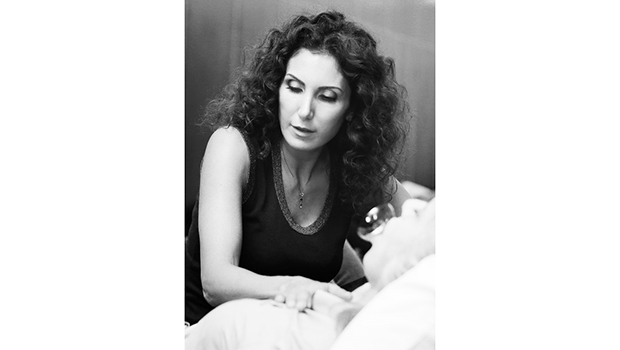Breathing Away Dysfunction
by Lorraine Ferrier
Nevsah F. Karamehmet is a breath specialist, author, motivational speaker and director of the Breath Coaching Federation. Many of us understand that diet can affect our health, but there is something we require even more than food or water. It’s air, and our breathing doesn’t always work as well as it should. “Breathing is a behavioral habit,” says Karamehmet. “Unfortunately, it can be a dysfunctional habit.” Many people are not getting air in the proper amount because of dysfunctional breathing habits, and sometimes the solutions offered—breathing techniques—actually pose risks to our health. Proper breath fuels the mind and body. Learning a breathing technique sounds like a simple, safe solution to increase our productivity and focus, but Karamehmet advises, “Doing a specific technique is not a solution.”
Karamehmet studied with top breath experts around the world and discovered that while breathwork is a technique that can help alleviate some discomforts, it does not solve the underlying problems. The deeper Karamehmet studied breathing, the more she realized that “Everything that is a technique is an incorrect attitude.” Some breathing techniques can even keep people sick. Breathing needs to be natural and not manipulated. “It’s a brain-stem reflex, and the more you surrender, the more you let go, the better you breathe,” she says.
Breathing is Not Respiration
The key to understanding our breath, Karamehmet explains, is knowing that breathing and respiration are not the same; the breath can alter the mind (psychology), but a breathing pattern is a behavior that is learned and unlearned. Breathing techniques can alter our respiratory chemistry and affect our mind and emotions, and because everyone is so different physiologically and psychologically, there is no one breath that fits all.
Karamehmet discovered the benchmark for a normal breath of six breaths per minute may be normal for some, but it could send others into a state of hypocapnia that can bring about numerous ailments. This occurs when carbon dioxide decreases in the lungs and in the arterial blood, changing the body’s pH. When the pH rises above 7.45, the body becomes more alkaline, entering respiratory alkalosis, which can then cause panic, breathlessness, dizziness, confusion and even muscle spasms.
Those symptoms are often treated with breathing techniques that are typically a short-term solution that cannot solve the root issues responsible for the symptoms. Karamehmet saw that as the pH level rose in her clients, so did the negative thoughts and emotions. Treating breath with a technique is a bit like treating a coughing, spluttering car by varying pressure on the gas pedal. It may help at that moment, but in the long term, it makes sense to look at the engine.
The Fast City Breath
Sometimes the way we breathe is a product of our environment or an adaption to it. “Typically, in big, crowded cities where people are usually in a rush, fast and shallow breathing is more present,” says Karamehmet. She thinks that fast, shallow breathing patterns can suppress emotions and self-awareness. “The moment someone resolves their dysfunctional breathing habit, all the emotions they kept suppressed rise up and can now be resolved,” she advises.
Fast breathing, slow breathing, shallow breathing, diaphragmatic breathing and chest breathing can all be dysfunctional breathing habits that start as early as age 3. “Life gets intense, and we get overwhelmed when we are children, and we in turn start to manipulate our breath,” says Karamehmet. “The dysfunctuional breathing becomes a way to cope with our feelings.”
From more than 20 years of working with breathing and seeing thousands of clients, Karamehmet has found that fixing this dysfunctional coping mechanism can ease health issues that can typically arise later in life. Restoring natural breathing can also help restore focus and energy sometimes in a noticeable or even profound manner.
Beyond Breathing Techniques
Karamehmet’s four-pronged approach to restoring natural breath differs from breathwork techniques in that it combines breath coaching, breath exercise, behavioral science and life coaching. She utilizes a capnograph, an instrument that measures carbon dioxide levels, allowing clients to see in real time how their breathing habits stress their body and mind. As dysfunctional breathing takes hold, focus is lost. Karamehmet states,”Getting tired is not the reason you’re not focused, but rather the dysfunctional breathing habit gets triggered when you are tired, leading you to lose focus. The moment you realize you are doing something dysfunctional with your breath, you can change it.” Karamehmet is on a mission to improve the way we breath by having a breath coach in every hospital a decade from now.
For more information, including upcoming workshops, visit BreathCoachingFederation.org or contact Melike Ayan at 212-980-8090 or melike.nyc@gmail.com.




























